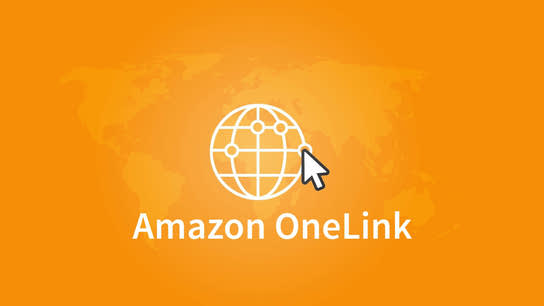Amazon, the behemoth online “everything” retailer, has virtual stores in many of the most populous and prosperous countries around the world. Many of these regional Amazon websites offer an affiliate program where Amazon associates can get a cut of the sale by sharing product links. Until now, these links have only worked for the regional store it was generated for.
Update (): Amazon now handles this automatically. There’s no longer any need to install the Amazon OneTag script on your website. You no longer need to use the special redirect link scheme discussed in this article.
Amazon has introduced a system for that will redirect affiliate links to the Amazon regional website that’s nearest for each user. I took a peek at how it all works.
Amazon Associate OneLink is the Amazon Associate program’s new feature where associates can link their Amazon Associate program accounts in Canada, France, Germany, Italy, Japan, Spain, United Kingdom, and United States together. After an associate has linked their different regional accounts together, they can then install a JavaScript on their websites that will take care of redirecting users to the correct regional Amazon website with the correct sales tracking code for that region.
Before the introduction of OneLink, Amazon Associates would either have to come up with their own geo-targeting solution or license one of a handful of existing geographically aware redirect services specializing in Amazon affiliate links.
OneLink is a simple and fast way for Amazon associate partners to unlock affiliate revenue from users in markets they normally don’t reach. In my opinion, the feature is over a decade overdue but still very welcome.
The suggested deployment method on the Amazon Associate Central website is to include a JavaScript that goes through every link to detect Amazon links — including in banners and some Amazon widgets — to replace them with a special redirect link. The script will update existing Amazon links without the need for website owners to update existing links.
However, that JavaScript is quite inefficient. It does a lot of unnecessary operations, and slowly works its way over every link on a page to find any Amazon Associate links. It also adds 22,3 KiB (7,2 KiB compressed download) to the size of each page load where it’s included. I thought I’d see if the script was necessary.
The script boils down to a simple redirect service that only works for Amazon Associates who’ve linked their regional Amazon Associate accounts beforehand. The redirect service detects your Amazon Associate “tag” in a link, figures out where the user is located using an IP address based geolocation lookup, and then replaces the associate tracking tag with the appropriate linked tag for the region, before the user is redirected to their local Amazon website.
Here is an example link that will be redirected to either Amazon.ca, Amazon.fr, Amazon.de , Amazon.it, Amazon.co.jp, Amazon.es, Amazon.co.uk, or to Amazon.com depending on their estimated geographical location:
https://assoc-redirect.amazon.com/g/r/https://www.amazon.com/dp/0316219282?tag=ctrltxt-20The anatomy of this link is quite simple:
Redirect service + Amazon link + "?tag=" + associate IDhttps://assoc-redirect.amazon.com/g/r/<amazon-link>?tag=<associate-id>The above scheme doesn’t only work with Amazon product pages. It also works with other Amazon page links including search results, categories, mini-stores, and other pages you can link to as an Amazon associate. It also works with Amazon’s amzn.to shortlinks as long as they contain an Amazon associate ID tag.
You can use these direct-to-redirect links instead of the Amazon issued JavaScript replacement. This assumes you’ve got some control of your Amazon links and can update all of them quickly. If you need to update a lot of existing links and use Amazon Associate widgets or banners, you may want to use their JavaScript instead.
If you regenerate banners and widget code on the Amazon Associate Central website, it would seem you don’t need to include a separate piece of JavaScript to use OneLink. You still need the separate script (or the direct-to-redirect links) if you want to use OneLink for your plain affiliate links.
As of , OneLink works with the affiliate programs in Canada, France, Germany, Italy, Japan, Spain, United Kingdom, and United States, and through extension their neighboring countries.
OneLink was initially only available for the Amazon Associate programs in Canada, United Kingdom, and United States. These are Amazon’s largest English language markets. Although not stated explicitly by Amazon, I believe OneLink debut in these markets because the online retailer found it easiest to match products across their international catalogs when the stores at least speak the same language. Associates can choose between only allowing “direct matches” where product links must link to an exact copy of the product, or “close matches” where a very similar product or search results may be displayed instead. The latter feature is the default, and I believe it’s a trick that easier to pull off technically when the product catalogs are all in the same language.
Update (): Amazon OneLink now also works with Amazon Native Shopping ads for the United Kingdom (this ad type isn’t currently available in Canada). After some testing, I can confirm that you still don’t need to install the OneLink script on your website if you go on to Amazon.com and regenerate your Native Shopping script and reinstall it on your website.
Update (): Amazon OneLink has expanded to include affiliate programs in Europe and Japan. There’s still no word on the Indian or the Australian affiliate programs.
